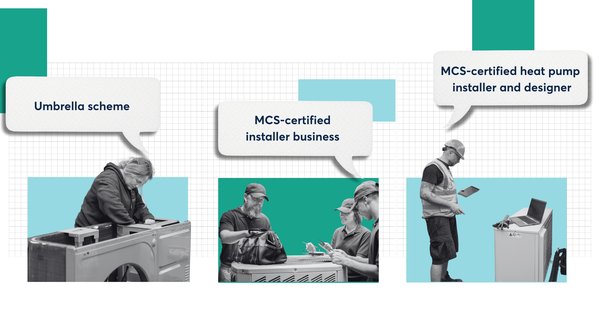Conclusion
Affordability is a major barrier to large-scale adoption of heat pumps. This is why any plan for decarbonising heat needs to include a mix of policies to ensure that the typical household will be better off switching to a heat pump. The goal should be to reach cost parity over the whole lifetime of a heat pump while ensuring upfront costs are not a barrier.
The analysis in this paper shows that cost parity is achievable, in the short and long term, with the right policy action.
Key actions to take for price parity
Rebalance levies between electricity and gas
Our three scenarios show that it is crucial to bring the cost of electricity closer to the cost of gas, regardless of what happens to the heat pump market. The practical approach to do this is to rebalance the various levies which currently apply to electricity and gas bills. Currently, these cost consumers 4.9p for each kWh of electricity they use while the equivalent amount for gas is only 0.3p. This means that levies make up 17% of the total price of electricity, but only 6% of the price of gas. Even though the typical household (on gas) uses 4.3 times more gas than electricity (on a kWh basis), this typical household pays £142 a year via levies on electricity bills but only £46 on gas bills [7].
These levies fund a range of programmes (including the Energy Company Obligation) and removing them entirely from bills would cost governments around £5bn per year. We have proposed two options to rebalance the levies while ensuring that there is no shortfall in funding:
- Balance the levies so that gas and electricity raise the same amount based on consumption. Set unit costs to make the total levies paid through a gas and electricity bill equal for the typical consumer. For current typical consumption this would result in 3.2p paid per kWh of electricity and 0.8p per kWh of gas. This way, customers who use more electricity or less gas than defined in ‘typical consumption’ (ie, using a gas boiler and electrical appliances) would be winners overall, while those who rely more on gas with lower electricity consumption would be losers, compared to today. As more and more households switch to electric heating, this will lead to gradual reductions in the amounts of money collected overall, which might require levies to rise in future.
- Balance the levies so that gas and electricity have the same per-unit levy. In this scenario, a uniform levy of 1.3p per kWh applies to both electricity and gas, keeping the total levy revenue constant. This rebalancing would have impacts in the same direction as the first option, but would put electric households at an even bigger advantage, and may require larger adjustments in time to cover the same total amount collected.
We have not modelled the option of moving all policy levies from electricity to gas. This would magnify the advantage for households using electricity relative to gas seen in option b above. Implications of this option have been discussed, for example in analyses by Citizens Advice (2023) or E3G (2023).
Either of these rebalancing approaches would create strong financial incentives to switch to heat pumps and away from gas without creating any direct costs to the UK Government. In both approaches, but more sharply in the stronger option, a smaller number of households would gradually cover the majority of policy costs. While putting households on gas at a disadvantage, it would ensure a rapid and sustainable reduction in relative running costs of heat pumps. While rebalancing levies would be close to revenue neutral for the typical household, the UK Government should consider steps to compensate fuel poor households who lose out as a result of an increase in the price of gas.
The effect of levy rebalancing would be amplified by any increases in heat pump efficiency. In our analysis these potential efficiency gains reduce costs by less than £100 per year. However, much greater gains in efficiency, with SCOPs moving towards 4.0, would have a bigger impact. It is too soon yet to know whether this is achievable across all homes.
Consider a gas price floor
The price of fossil gas is by far the strongest factor in the overall cost difference between high-carbon and low-carbon heating. While higher prices for fossil gas will favour low-carbon heating, sustained low prices would pose a big problem. This would both increase the electricity-to-gas price ratio and make it harder for lower running costs to offset the upfront costs of a heat pump. Setting a minimum price for gas is one way to mitigate against this outcome.
The Government could set a floor around 4p or 5p per kWh on the household gas price. This could fall over time as the electricity price is increasingly decoupled from the gas price.
Plan for heat pump subsidies past 2028
Our scenarios show that even with action on electricity and gas prices some level of subsidy for heat pumps is likely to be needed into the 2030s. The UK Government must have a plan for continuing subsidies beyond the current end date for the BUS (in 2028). It also needs to estimate how much these subsidies will cost as heat pump uptake ramps up in the early 2030s.
The number of grants available each year needs to rise in line with demand, to provide an ongoing incentive to a growing number of households. However, to prevent costs spiralling, the size of individual grants will need to be stepped down gradually over time. Our analysis shows that more modest subsidies (of £3,750) in 2030 would still support cost parity for the typical household, as long as other measures to reduce running costs have also been taken.
Given the variation in costs between households, there may be a case for the government to consider additional subsidies for homes that require more remedial work before installing low-carbon heating. This could be part of the main subsidy scheme, or part of a separate ‘heat pump ready’ subsidy scheme.
There is also a strong case for fully funding low-carbon heating installations in fuel poor homes, as well as social housing. The Energy Company Obligation scheme currently installs heat pumps in some fuel poor homes, although this would need to scale up significantly to cover all fuel poor homes. The costs of fully funding low-carbon heating in all fuel poor homes are likely to be significant.
Ensure low-cost finance options are widely available
Even if heat pumps and gas boilers cost the same over their lifetime, heat pumps will remain considerably more expensive upfront. Most households cannot afford a heat pump out of pocket. As such we expect most heat pumps to be purchased using some form of finance. A key action for policymakers is to ensure that low-cost finance is widely available to help households do this.
Across all three scenarios we have assumed that heat pumps are bought using finance and the costs are spread over the lifetime of the unit at a flat annual rate of 5%. This roughly reflects current mortgage rates rather than other forms of consumer finance, such as personal loans or car finance. Governments in the UK may be able to use various forms of support, including guarantees, to reduce the interest rate paid by households to purchase heat pumps. This type of intervention would have a significant positive impact on the lifetime cost of a heat pump.
Governments in the UK may also consider offering low-cost retrofit loans, either at government borrowing costs or with zero interest. Zero interest loans would require a governmental subsidy, which would vary depending on market interest rates.
Achieving cost parity between heat pumps and gas boilers is not straightforward, but with the right policy action it is achievable. Applying the right mix of policies to create incentives over the course of the next 10 years should ensure that in 2035 close to half of all homes will have low-carbon heating. This should lay the ground for phasing out new boiler installations after 2035, to meet the UK’s net zero goals.
--------------------
[7] 2,700 kWh electricity and 11,500 kWh gas








